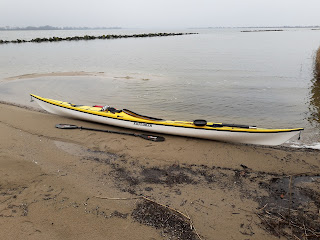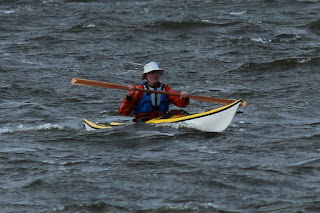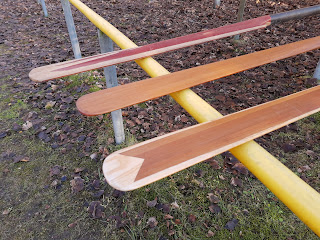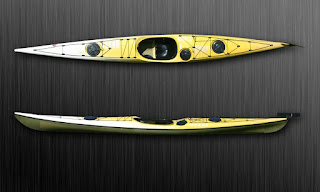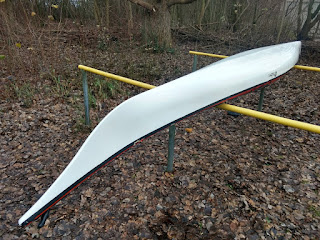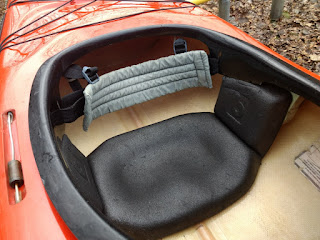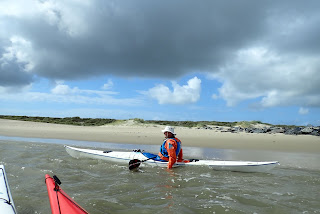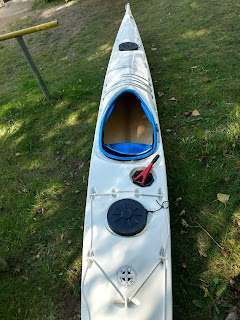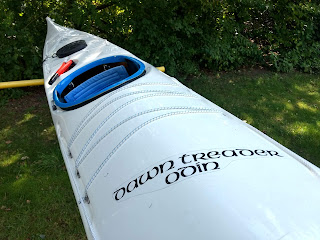First a disclaimer: I am not a professional reviewer, nor do I have much experience in testing other boats. I only want to share my personal experiences with the P&H Baidarka Explorer / Dawn Treader Odin that I have paddled for about 10 years.
As I mentioned in my previous post the Dawn Treader Odin is in fact identical to the much more known Baidarka Explorer.
The Baidarka was one of the first designs of Derek Hutchinson. As I believe he crossed the North Sea with it. It was designed for great sea keeping capabilities and with expeditions in mind. If you compare it to more modern designs there are a few things that jump out:
it is quite narrow at 51cm
it has a straight keel line with no rocker
it has a relative deep V-shaped bottom
These characteristics result in particular behaviour: the narrow beam and V-shaped bottom make the boat feel tippy. The initial stability is not great. Not everyone can get used to this and it is one of the reasons the Baidarka has got his notorious reputation.
Another reason for this reputation is that it is quite difficult to turn. The long straight keel with the deep V-bottom asks a lot of power and leaning to change direction. Edging helps but you have to edge much more than other boats for the same effect. Certainly more than you can expect from a novice paddler that already feels nervous because of the lack of stability...
But it is of course an excellent tracking boat. Directional stability is very good. Some people think that this is an argument for not having a vario skeg. This is a mistake. You certainly need a skeg to correct the weathercocking. As any well designed kayak it will luff in the wind and due to the hull design it is not easy to correct direction. Without a skeg you will have a hard time to fight the weather cocking. With a skeg however you can point the boat easily in any direction you want and it will stay on course like an oil tanker. I don't think there a other designs that can equal this.
If you are used to the stability, the hull shape makes indeed for a comfortable ride in all kinds of waves. It surfs well but you have to make enough speed to catch the wave. So it is a safe boat if you don't want to surf. If you are in a surf it is like sitting on a torpedo, very exciting. The buyant bow will not dig deep while surfing. Due to the excellent tracking it is possible to make long surfs but when it starts to break-out you better let it go and prepare for a brace. Correcting this long keeler is simply not an option. Best is to turn on a wave top. The Baidarka is not a play boat for in the surf or rock hopping. There are other boats for that. But it is a very good expedition boat.
To be able to control the boat it is very important to have a good seating position. The narrow, high deck is not ideal for good boat contact. You have to adjust it with some foam to find enough support for your legs to be able to edge and roll. My Dawn Treader Odin has a larger cockpit than the Baidarka. At first I thought that was a good idea for my long legs. It proved to be not such a good idea: I couldn't find enough support for my legs under both sides of the cockpit rim. In the Baidarka with ocean going cockpit I could at least put my knees under the deck.
The Baidarka has a clear "Swede" form: the widest point after the cockpit. Together with the narrow beam it could be a fast boat but there a lot of factors that determine the speed potential of a kayak. The deep V cross section and the extra "deadwood" (integral skeg for and aft) gives extra wetted surface that slows the boat down. Actually I don't know whether it is particulary fast or slow.
